This article was originally published as part of my column in Inc.
A long time ago, I made a promise to myself that I wouldn’t ever touch upon politics in my writing. I broke my rule back in February when I was interviewed by The Washington Post on Hillary Clinton’s brand, comparing its legacy to that of McDonald’s. I sure broke my rule nicely. So here I go, breaking all my rules in one sentence, yet again:
There is something very sincere we can learn from Mr. Donald Trump.
Before you hit the comments field in rage, let me explain. ‘The Donald’ is quintessential branding in the making, and we can all witness it live, night after night.
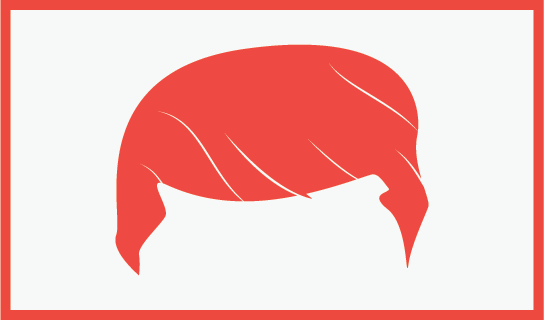
I recently came back to Los Angeles from a three-week European vacation. As I left the U.S. for my trip, I started worrying that Trump would become the center of every conversation I’d have with friends and strangers alike. From answering the ‘Do Americans really like him?,’ the ‘Could he really become President of the United States?’ and, of course, the most dreaded, ‘What do you think’? In the end, the conversation only came up once, and instead of my expected response, I found myself somewhat defending the idea that is Trump. I was shocked.
It turns out I am actually fascinated by the Trump persona and brand, even though politically and intellectually I would like to remove myself rather far from his viewpoints. The fascination comes from something truly mesmerizing, something that has nothing to do with the political Trump brand. New and steadily growing ventures alike can utilize these 3 lessons I learned from Trump to turn into better brands — even if they otherwise grunt at the TV and look the other way when ‘The Donald’ disrupts their dinner:
A Donald brand is a Frank brand. It’s confusing, I know, but you cannot refrain from looking in awe at this man’s candor. If anyone, it should be Mr. Trump that reads off perfectly crafted scripts and not answer any unvetted questions, yet he walks on stage and goes off-script within seconds. Despite everything that comes out of his mouth (and much is met with regret by many on his team, not to mention his wife), it is his candor that makes him feel different, honest… a true go-getter. He defines showmanship through a very unique personality — raw and uncensored. That’s what today’s voters and consumers alike are aching for in both people and brands: being truthful and having the guts to give it to me straight. The days of scripted press releases are numbered. How can your brand make that switch? Clearly if Trump draws a crowd that way, your brand can achieve the same (without the drawbacks) if you speak your mind to an audience that thinks alike. By eliminating some, you will earn many others.
Rolling Stone quotes Gwenda Blair (Author of Donald Trump: Master Apprentice) saying “It’s all he does, the bragging and the repetition: It’s called branding, and he’s relentless at it.”‘ Over and over again you will hear the same statements about his money, the other — the bad — rich folks, and China with a bit of ‘bad Obama’ and taxes we should be getting from foreign companies sprinkled on top. Step and repeat. Fear of getting boring? Look at Nike’s Twitter bio today. What does it say? ‘#justdoit’ – and that’s it. Nothing more. Nothing less. Nothing new — and that’s just fine. If the message was crafted with its audience in mind and is well received by that audience, stick to it. Relentlessly. Seek your hit and start playing it like Trump.
Though we may often think of Trump as far removed from reality (and his voters), he has found an audience of blue-collar working class citizens who deeply connect with him — a man who lives with a self-proclaimed and oft-questioned 2014 income of $362 million. Herein lies the magic from a branding point of view: his life is surreal, but he translates it into a reality that his audience can relate to. It’s quite magical. Marketing in and of itself is a very surreal form of communication. You assume a lot about your audience while being stuck with the point of view of an advertiser or business. Once you hit the green light on an E-Blast, a magazine ad publication or a Facebook post, you witness surreal turning into real. The more you think like the ones on the receiving side, the more real it will become. And that’s where you need to be: part of reality as a real, honest and truthful brand.
Indeed, being uniquely and truly yourself, not worrying about the haters, repeating the best stories and the ones that connect are all part of what makes great brands.
As for Donald, he may not become the next President of the United States, but he sure makes for a grand brand spectacle we can all learn from. In moderation, of course.
See grain. Go against it.
In a wonderful promotion that goes straight to the heart of its brand, outdoors consumer product brand REI (Recreational Equipment Inc) decided to remain closed this Black Friday. It will instead pay its employees to spend the day outside. An idea that is so nuts for a big retailer, that will lose important revenue on the biggest revenue generating day of the year, that would never go past any Board of Directors or Shareholders…that it makes for the perfect promotion for REI to pull off.
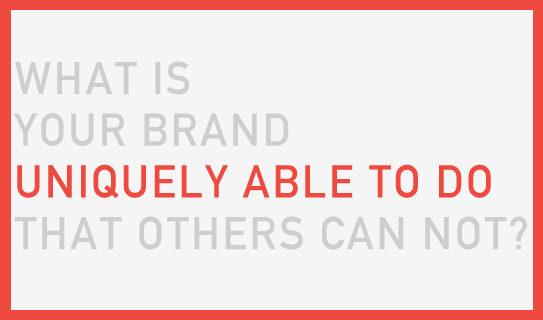
That is the question I always ask startups as I help define their brand strategy. What is it that makes you so unique and how can you leverage your uniqueness to gain hearts?
REI is a co-op. It is owned by its members, its shoppers, by all of us. If anyone, they are uniquely able to ‘#optoutside.’ A genius move that goes deep into the heart of the outdoors brand and its loyal audience: “While the rest of the world is fighting it out in the aisles, we hope to see you in the great outdoors.” Opt Outside. The revenue that they will (likely) lose that day, they are gaining in lifelong, renewed, love by its members. A love that is worth every penny (used solely as a metaphor) of their Black Friday losses. Money can’t buy what this strategy will give back to their brand.
What is your takeaway?
Well, what is your startup uniquely able to do? Define and follow it to connect with your audience in deeper, more meaningful and plenty of profitable ways. Oh, one more detail: Have the courage to execute upon it.
CATEGORIES: Blog Startup Advice Your Brand Launch: Brand Atmosphere Your Brand Launch: Brand Strategy
I saw the 90’s Britpop band Blur at the Hollywood Bowl last night (If you don’t recall them, I captured a few pivotal seconds for you).
It seemed as though they were as surprised to be on stage as were the fans seeing them tour. It was rather special. Not that I am a fan by any means – I was always leaning towards Oasis. Furthermore I belong to the 1% that appreciate their latest work more than their hits, which made watching a 90’s hit band and their fans solely interacting based on their hits a rather interesting experience.
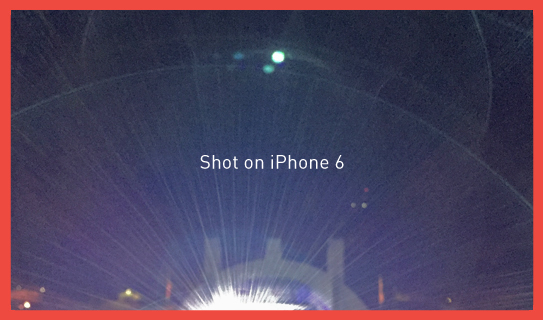
Fans went nuts and sang along word for word to songs that were really not all that great. There was a feverish sparkle in their eyes. They were filled with joy. There may have been some tears. It was a spectacle watching the spectators.
None of this was about the band at all. It wasn’t about the songs that stuck with them since adolescence. Maybe it was about colorful cassette tapes and the smell of vinyl records, about cool band t-shirts and cherished ex-boyfriends. It was indeed about the memories the audience associated with the songs, about the times they were listening to Blur all the time.
It was all about them, not about the band that they cheered for. Everyone celebrated moments they once had, and together they added a new moment to it. Life, as we know, is about a collection of moments after all.
Remember the Kodak Moment? Today it is Shot on iPhone 6. A spectacular way to connect a very special moment that was captured to your brand. Only the most amazing moments are worthy that brand association. Remember the time you ran your very first marathon and were handed a Gatorade at the finish line? A moment you won’t forget. You are drinking Gatorade after your workouts ever since, not quite knowing why.
As a new, or young brand, make it your goal to be part of memories. Or even better: Be a facilitator of those moments. Be the brand that cheers.
On my way to the car after the concert last night I encountered a young homeless man on the sidewalk. His sign read: ‘Begging sucks. Compassion doesn’t.’
Marketing sucks. Being part of special moments doesn’t.
A little while ago I was driving through Venice (California) and noticed a surf shop that must have recently gotten broken into.
I was mesmerized and quickly snapped a picture out of the car:
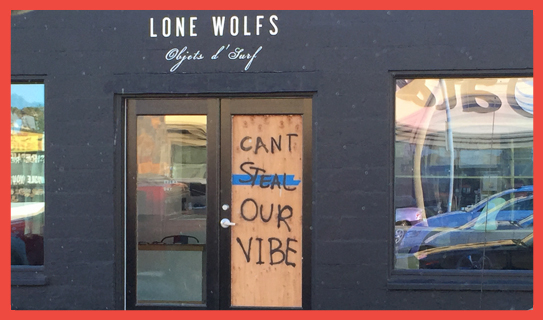
To me these 4 simple words so masterfully describe how we help our clients derive their company’s true soul. What we are really doing is determining the ‘vibe’. A vibe that you can fully embody and that others can fully embrace. A vibe that one day turns into your norm and that you spread with ease. A vibe that if competitors come in, they can no longer simply steal.
That vibe is how Keith Moon played the drums or how Craig Kelly surfed the snow. There have been plenty of amazing drummers and snowboarders, but they can’t touch that style, that vibe.
How poppin makes receiving a stapler in the mail exciting? It’s their vibe.
That vibe is the foundation to their brand.
“Can’t Steal Our Vibe.” Street culture poetry that every company transitioning into a brand can learn from.
If all fails, if all gets stolen, what does your brand still own? What is that foundation that you can rebuild upon with ease, because it is based on passion and emotions and not products and numbers?
CATEGORIES: Blog Startup Advice Your Brand Launch: Brand Atmosphere Your Brand Launch: Brand Strategy
Taking an Uber to my meeting I decide to stop on the way for coffee. 5 minutes ahead I use the Starbucks app to place my order. The app knows what I like, so creating my ‘warm’ double-tall-nonfat cappuccino with extra foam is a matter of one single tap. Rinse will swing by tonight to pick up my dry-cleaning for the week. By that time my living room furniture from Greycork should have arrived. All of it. I will assemble it without tools in 4 minutes, just before the dinner ingredients arrive at my door step. It’ll take me 10 minutes to make my farm-to-table dinner with Gobble tonight. My wife will be impressed.
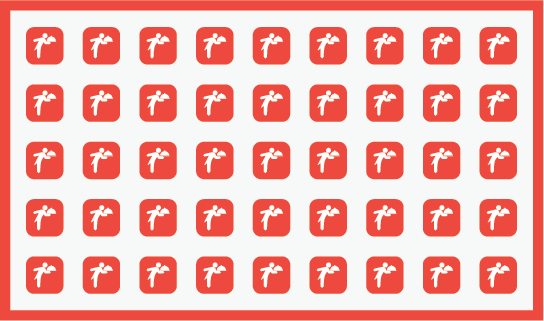
Welcome to today. Slowly we adapt to a new way of doing things, and rather quickly are we getting used to it. Automation is the norm. Tech startups introduced us to what I dub ‘concierge service for the masses’. What used to be a luxury, is now expected. What used to be ‘disruption’, is now advancement.
Today we have very long brand memories of very short brand experiences. Those experiences are being supported by the icon we tapped, the actions we took, and the visual brand language that supported us along the way. Todays’ brands are built on the interaction of experience and flawless design. The first touchpoint more than ever is the logo/icon, which in many cases you simply tap to start your journey with a brand.
How much brand design remains with us after our experience? How much does a logo matter when we swiftly tap and move on? Here are 3 tips that will assist you when contemplating your next logo design, or current logo re-design, while keeping today’s consumer behavior up front and center:
1. You Have 8 Seconds To Communicate
Brand identities in today’s age need to focus on, and re-iterate, the essential qualities of a product or service in the simplest way possible while conveying more than ever before. Us humans are becoming more visual. Our attention span has dropped to 8 seconds before getting distracted. Put the two together and your logo turns into a key asset when communicating your overall brand, because it is one brand element users can not opt out of. Oftentimes it presents the only way to opt in.
2. Your Icon Has Its Name For a Reason: It Demands To Be Iconic
Since no one reads the marketing copy that went through twenty iterations to finally make it onto your web site (no one, but you, and perhaps your team since you are paying them for it), it just ends up turning into an annoyance to many users. It’s a road block to get to the images or the video that describe what you are trying to say verbally, in a stimulating visual way. In this visual journey, the logo mark and associated logotype turn into the focal point that is being associated with the brand experience when it comes to apps, and that spills over into our behavioral patterns outside the ‘digital realm.’ The more iconic your mark and typography, the more it’ll differentiate and stick in people’s minds. Today more than ever before, this becomes a do or die for logo designs, or call it an app icon if you will.
3. Make Your Logo Smaller. Even Smaller.
While brand identity designs needed to function at small scale, because they had to be fed through a fax machine in black and white and still be recognizable (hold their shape), yet convey the same meaning as when they were shouting from a billboard, the rules have not changed. The roles have changed: We can now, for the most part, skip the black and white version of your logo design, but your logo will live in the tiniest of social media avatars as well as (quite often) the app store. So small is – still – beautiful; it has to be.
As the consumer comes to expect simplicity and swift completion of tasks in a straight up user interface, we need to look at the creation and usage of a product or service logo in a different way to further evoke and support this experience. With lifestyles changing dramatically, so does our interaction with brands. Now that ‘the concierge service’ movement is turning mainstream, expectations of your brand are changing.
Make your logo your support during this change: A trusted friend that will bend over backwards for you and your followers; it will adjust during stormy weather; it will talk to even the ones that will only give it one second of their time. Most importantly, it will always strive to form a meaningful connection with each and everyone of them. And then when you hit the pillow at night it will keep on working for you while your Fitbit will be busy calculating your sleep pattern.
CATEGORIES: Blog Your Brand Launch: Identity
I recently had a brand consultation call (via Clarity) with a fashion accessory startup from Singapore working on a convincing new product that perfectly fits into a niche yet also has the opportunity to take over it completely.
If they ever get that far.
The startup needs to go head-to-head with the largest players in the space in order to succeed; a space where big brand names are key to morphing indecisive shoppers into on-the-spot buyers. I saw their value proposition after talking with them for ten minutes, but how will they ensure to get noticed in split seconds? Are consumers willing to pay the same for a new no-name brand as they would for the time-tested brand names one wants to be seen sporting? Heading towards major competition, I had one advice for her going into a saturated B2C/Retail market:
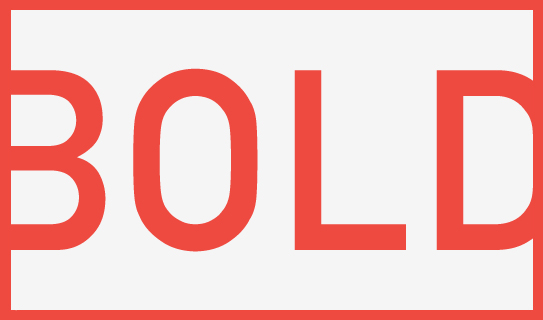
Be BOLD
The big players can be sexy, smooth, sophisticated, glamorous, heck…they can be anything money can buy. Bigger displays, more massive campaigns, bigger celebrity endorsements, stupendous photo shoots. There’s one thing only you can, and they can’t: You can be BOLD.
It is a 4-letter word, and you can own many more of those if you’d like – and not in the fabricated manner FCUK did. Words others can only hesitantly type, you can actually be. They may go bold on a marketing campaign, but your brand can launch being bold – with an immense amount of attitude and moxie. You can shout. You can be loud. It might be the only way you’ll get noticed.
Look at your product and examine your competitors. Analyze the single most important and unique attribute describing your brand; an attribute you can own in your segment. Is it empowering, motivating, strengthening, enriching? Then look at what outrageous thing you could do to make your audience love you, that is based on this single attribute.
T-Mobile, who you’d think of as being far removed from being a startup, had to switch gears in recent years and started looking at themselves as a rebellious startup in order to survive, and thrive. And boy did they go bold and are crushing it today. Re-establishing themselves as the ‘Un-carrier,’ T-Mobile is throwing around the words free, included and unlimited just as much as Rebel-CEO John Legere says ‘those fuckers,’ describing the other big players in the field. Those players are the ones that are now falling behind. A short story about a large corporation trying to be as bold as a startup. So, what stops you as a startup from going bold?
Surpass FEAR
Fear is the only reason why most startup founders don’t take the most rewarding risk of their lifetime. You are scared to fail. You are afraid to use crazy names (yes, unpronounceable products), make everyone who buys a first edition a shareholder, give away your product for free, launch it double the price of your biggest competitor, and on goes the list of outrageousness to chose from. But you are scared to take (hold on, bonus 4-letter word magic coming up) risk.
Gain LOVE
Take a step back and analyze your situation: Only you can do it because you have very little to lose by going all-in, full-on bold. All you can gain is customers that not only like your stuff, but love it. They will build a small army of early brand ambassadors for you. For free. That is, in return of you going totally bold and having no fear. Modern consumers ache for brands like that, we all do.
When you analyze your competition, look at what bold steps they have taken lately that are not shallow campaigns, but actually built on true brand beliefs. You may notice that this is a weakness your startup can turn into its key strength. But first: Drop that fear.
This article was first published via Mashable.
A handful of brands keep their loyal advocates excited and engaged by using hidden design language to tell the bigger stories in a highly visual, yet subliminal manner. And that is exactly why we are drawn to them: We seek to be “in-the-know.”
Secretive design language is widely used on web sites as “Easter eggs,” within products as hidden features, as hidden offerings by food providers (In’N’Out’s secret menu or Bible citations on the packaging, for example) and even on passports as security enhancements, like Norway’s next passport design.
Utilizing design secrets to share underlying themes is a powerful brand statement — one that helps gain buzz and keeps believers lining up for more.

Very much like the speakeasy that has no sign out front and is incredibly hard to find, we are attracted to brands that challenge us intellectually and hide elements from plain sight. Seeing and connecting them makes us feel special, and that is one wonderful feeling that a brand can trigger within their audience.
Here are two ways your brand can turn to the subliminal to get its audience engaged.
Brand identities, or simply ‘logos,’ are the most common place to find hidden messages and deeper meaning at the very top of the visual brand pyramid. The arrow between the letters ‘E’ and ‘x’ in the FedEx logotype is the go-to example for subliminal messaging in logotypes, but you can find them all around you.
As shown by Amazon’s “delivering a smile and products from A-Z” and Baskin-Robbins’ “31 flavors,” key messages are often hidden within a logo. Today’s clever tech startups that understand the power of brand story telling are right on their heels.
A brand’s identity needs to say many things, and graphic designers go beyond the obvious to achieve all, or at least most, of the objectives, having to pull out some visual tricks to fit them all in. Once the audience finds out about a hidden element in the brand identity, it feels more connected to the brand itself, as if it’s part of their secret.
We love sharing that secret with others. Today, we call that virality. Your logo alone can get people talking about the deeper meaning behind your brand.
Your Brand Atmosphere is your visual foot print. It is what your audience sees when they get in touch with your brand image. It’s everything from your collateral and online presence to trade show booths and your email signature. Brand Atmosphere represents another opportunity to tap into the power of hidden design language.
When my brand consultancy was asked to create the visual image for Martian Ranch and Vineyard a few years ago, we were thrilled to learn that the name actually stemmed from the founding couple’s sons, Martin and Ian. Cleverly, they put the two words together to formulate a name for their next big offering, the winery Martian.
Given the name, the client’s directive from the get-go was to craft a Martian character to grace the wine labels and represent the Martian brand. My agency, however, did not love the thought of being greeted by a Martian, not with a $22-$35 bottle of biodynamic California wine and a brand that stands for much more than what the name implies.
Ensuring a happy ending, or a happy landing so to speak, we allowed the Martian to make its way into the brand’s design, but we restricted its appearances in a refined manner. When a consumer opens the bottle, for example, Martians are dancing around the cork, drinking in a festive manner.
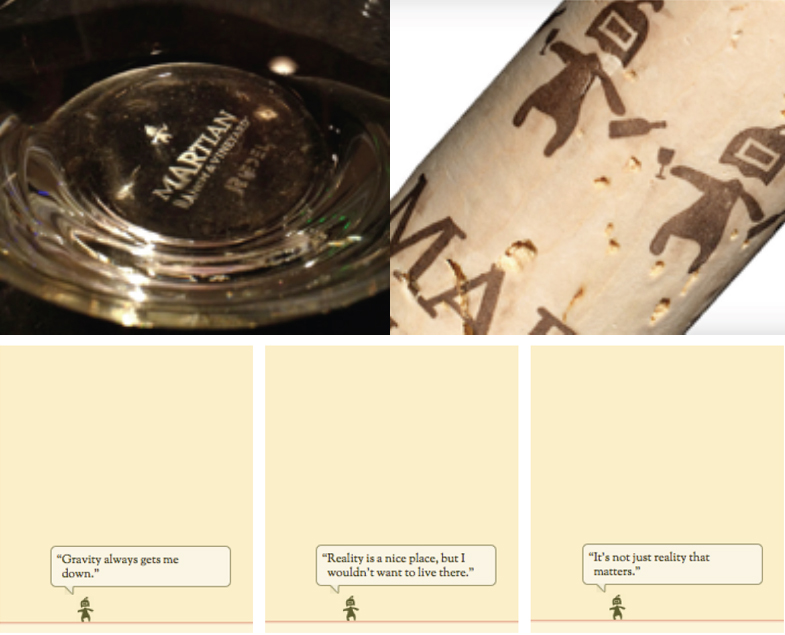
Then, when a site visitor goes to Martian’s landing page (no pun intended) for longer than 30 seconds, a tiny Martian character beams itself onto the site. It shares random thoughts like “Reality is a nice place, but I would not want to live there.” Needless to say, the Martian hunt was on and the buzz quickly spread, one glass at a time. All it took was one extra layer being subliminally added to the design language.
You need to dig deep into the core values of your brand. Is it humor, like Martian, or is it choice, like Baskin-Robbins? Incorporating hidden design language that speaks in unison with your brand values is useful and cost effective; you’re already going to pay to develop your brand’s identity and visual atmosphere.
Let the cleverness of your brand speak quietly, and you will hear the echo from your audience.
CATEGORIES: Blog Startup Advice Your Brand Launch: Brand Atmosphere Your Brand Launch: Brand Strategy Your Brand Launch: Identity
I have to admit, I was hesitant to share below thoughts with you as they do not relate to your branding pain points, nor are they utilizing my core expertise. Yet it presents advice dear to my heart.
We read a lot about the steps it takes to be a successful entrepreneur. They revolve around networking, innovation, perseverance, collaboration, seizing opportunities, and on and on goes the list. A list of advice you and I both often get trapped in – or so I assume – since we are heading towards the same goal of being a great entrepreneur, regardless if you are just starting out/up, or if you have been successfully in business for decades.
I suggest 10,000 steps to success.
Daily. That’s right, 10,000 steps daily, and I mean that literally.
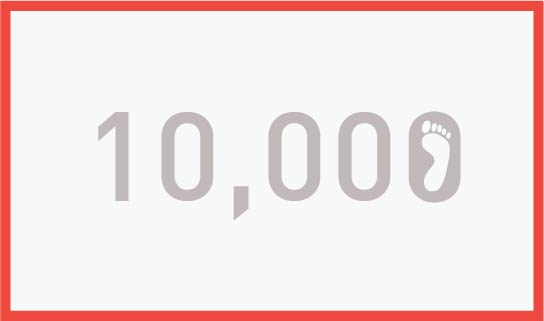
Successful entrepreneurs walk. A lot. And not on a treadmill. They walk, because it is their secret weapon for mind and body to be in balance, resulting in a productivity and creativity boost. This is a good thing for every body, but essential for entrepreneurs.
When you start walking, two amazing things happen:
As many of you know, I spend my days conducting brand strategy sessions with my clients, sometimes 9 hours in one go, until we find the right strategy. I speak to groups of entrepreneurs, sometimes hundreds in a room. I give ad hoc brand advice over the phone, while assisting my international clients with ongoing brand strategy assistance. In-between, I drive the creative output of my consultancy’s talented designers and strategists. And yes, I also write a weekly column on branding in this space (obviously not this week as I temporarily transitioned into a ‘fitness guru’ – temporarily, I promise!).
All of this is exhilarating, a nonstop intellectual challenge for my mind, while my body is being neglected standing or sitting an unhealthy 10 hours a day, Monday to Friday. Hence I make it a point to walk every evening for as long as time allows, sometimes only 20 minutes, and for a few hours on the weekends. I do this religiously. Solo, just me and my thoughts, often surrounded by nature’s wonders. Lucky to be living near the coast in Los Angeles, I walk on beaches and cliffs overlooking the ocean. If I am working out of a different city, I walk from one end to another and hitch an Uber back (which co-incidentally is the best way to authentically discover and understand a city in a few hours time).
Where and how you walk makes a difference. You either turn your mind off completely, or you set yourself up to stimulate creative thoughts. I am not a fitness expert nor a therapist by any means. I am an entrepreneur who has analyzed his walks and loves the way it positively shapes his business. Given my decades of ‘walking with a purpose,’ I suggest you choose your walk based on your state of mind:
If you seek to relax, relieve stress and turn off your mind I rather counter-intuitively suggest you go on complicated, more strenuous hikes. Sounds strange, I know. No lengthy, sandy beach walks listening to crashing waves for you when you are overworked or overwhelmed – sorry! Instead, pick routes that require you to pay attention to the path and your surroundings at all times, that way your mind is focused on a task that is not business-related, while your body gets naturally (positively) exhausted. Afterwards you will feel rejuvenated and ready to look at your business challenges in a new, calm manner.
If you want to think, go on easy walks. If you need to brainstorm, solve a problem, plan a pitch, or simply want to recap the events of the day or the week (or plan for what’s around the corner) take that beach walk or be on that flat endless city walking path. It will trigger ideas, nearly guaranteed. I abruptly stop to send an E-Mail to myself every few minutes during those walks, because thoughts just keep popping up; thoughts that otherwise would not find space to be generated. Yes, the idea to write this article made its way to my Inbox in the same manner, during a stunning Saturday morning walk.
Many steps to entrepreneurial success take time and effort to implement. Many are bogus. Walking your neighborhood every day and making an effort to walk in nature on the weekends takes very little effort and your business will immediately be fueled by the results, while your body, your co-workers and your significant other will feel the positive side-effects.
See, I told you those would be 10,000 easy steps. Now, get going, for your business’ sake! And I’ll get back to writing about branding.
CATEGORIES: Blog Startup Advice
This article was originally published as part of my column in Inc. on July 7, 2015.
On July 7, The Way Station bar in Brooklyn offered its female patrons any drink for just 77 cents on the dollar. Here’s how it ended up hitting the jackpot.
Giving away free stuff, matching a sale to a donation, giving major discounts, celebrating certain tribes (psychographic or demographic)–all of these are age-old marketing and sales techniques that are often applied to certain days, products, or audiences. I’m sure this became crystal clear to all of us once again during the 4th of July holiday–any holiday is a good time to come up with that sales shtick or marketing idea to generate immediate sales and future leads.
Most sales tactics are usually lukewarm, overused, and, well, “sales-y.” They start to turn interesting when they feel not only generous but also authentic and empathetic. A tough mix to brew up, but one bar in Brooklyn, New York, has done just that this week. On July 7, The Way Station bar offered its female patrons any drink for just 77 cents on the dollar.
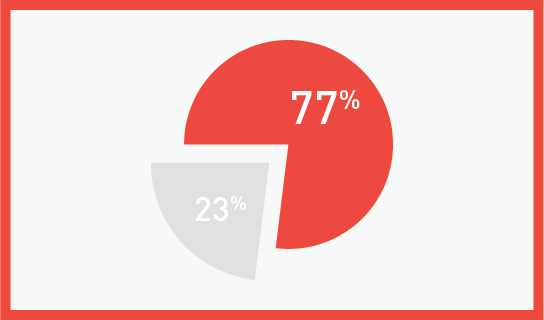
Bizarre, don’t you think? Here’s where the empathy and authenticity hits the jackpot: DNA Info New York notes that the business is “recognizing the difference between the average pay of women and men–77 cents on the dollar, according to the labor department–charging ladies only 77 percent of their bar tabs.”
Even though the idea itself stems from the Lean In D.C. chapter of Sheryl Sandberg’s Lean In movement, I thought it was a great promotional stint. Then it hit me: Is this a one-time marketing idea, or should it turn into a business model?
I spend a lot of time with entrepreneurs defining their brand positioning at the onset of their company foundation, and the lines between sales opportunity, marketing shtick, and authentic brand promise tend to blur quickly. And that is a mighty good thing.
Toms gets rightfully credited for creating the “one-for-one movement,” which acted as the foundation to a tremendously successful business model that has been adopted by countless others, from Warby Parker to Yoobi. It’s a new twist on an old sales tactic: buy one, get one free.
Entire companies are now based on what used to be “special promotions,” and they’ve made it their meaningful brand promise. The huge success of celebrity chef Danny Meyer’s Shake Shack can be attributed to his “enlightened hospitality” mantra, which is taken into action through the burger chain’s staff being overly generous to customers. Yes, you might get a free dessert because a waiter decided you deserved it.
Startups that successfully weave sales tactics into their brand’s positioning are becoming more and more prevalent by making truly meaningful experiences for customers. Looking at the one-day promotion by the Brooklyn bar made me wonder why the 77 percent discount should not turn into the next one-for-one model for other businesses.
Hopefully, one day the wage gap will close for good. If your startup is seriously concerned about gender pay inequality in 2015 and beyond, the markup lost in that missing 23 percent can be made up in many other ways. Attracting a passionate audience that will fully embrace and share your brand–that might be more difficult to accomplish.
Just my 23 cents on a topic that I hope will be taking branding, and the startup scene, by storm–and rightfully so.
What can make one even more nervous when about to speak to a room full of acclaimed rocket scientists and astronauts (yes, they actually did the round-trip we are all dreaming of)?
Right when I was walking on stage the organizer interrupted to quickly introduce Paul Tompkins to the select group of participants as he joined the Exploration Institute Summit at Caltech a few hours late. His excuse? He was kept busy launching one of (Elon Musk‘s famed) SpaceX rockets in the morning. Yep, we all have our excuses, don’t we? This one felt rather legit and it made my entrance that much less significant and that much more nerve-wrecking as I was about to talk to a group of geniuses on the importance branding plays in the planning stages of their next explorations – explorations they were busy planning over the course of this 2-day summit. To the outside world I was standing tall, on the inside I felt very, very small. Telling myself ‘they’re just people like you and me’ did not do the usual trick to calm my nerves in front of this group.
As so often is the case in midst of an adrenaline rush, it ends up being a whole lot of fun. And may that be one of the few things that I had in common with the group of geniuses in the room of the Keck Institute for Space Studies that sunny April afternoon in Pasadena: We all get extreme personal and professional satisfaction out of uncovering possibilities, planning launches and exploring new frontiers.
Here is a short snippet of that speech (forgive the sound, it may or may not have been aliens listening in), which I felt like sharing as it relates to a new mission to space just as much as it does to your launch of a new company, service or product. And what week would be better suited than the week of 4th of July where many of us in the U.S. are busy launching our own, more approachable, versions of rockets into the sky.
3, 2, 1, 0, all engines running:
(click here if you can not view above video)
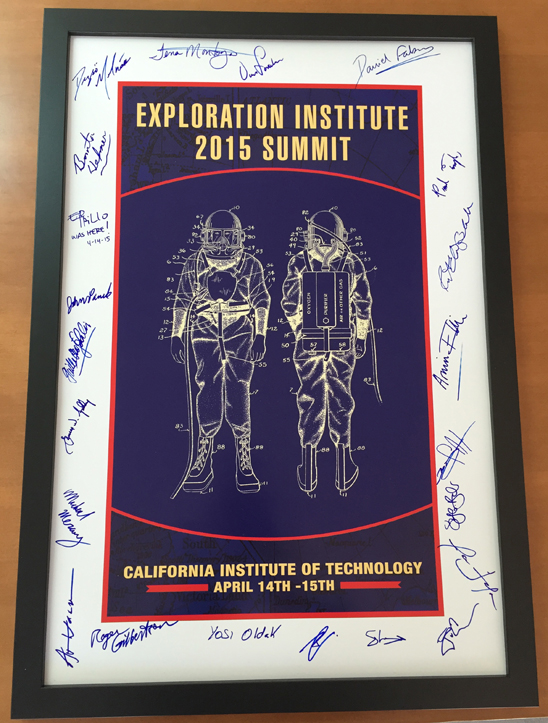
The ‘I am with genius’ trophy